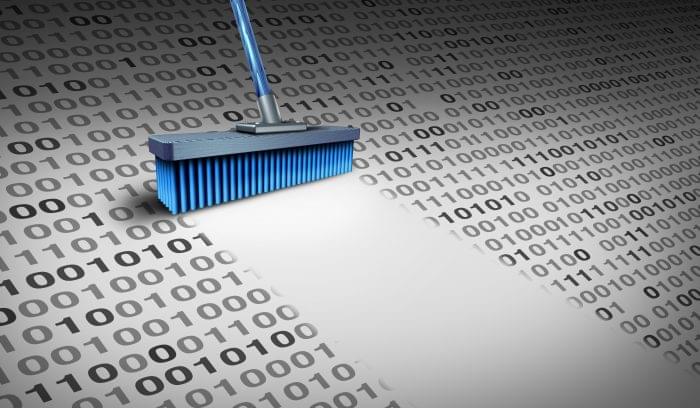Data Cleaning Techniques in IoT: Enhancing Data Quality for Precise Analytics
The rise of the Internet of Things (IoT) has transformed how we gather data, flooding us with vast amounts of information. Yet, the integrity of this data often faces challenges stemming from factors like disruptive noise and gaps. This article explores data cleaning techniques in loT, which are essential for enhancing data quality and ensuring precise analytics.
Significance of Data Cleaning
Before diving into the techniques, it’s crucial to grasp the significance of data cleaning in IoT ecosystems. Inaccurate or noisy data can severely hamper decision-making, leading to flawed insights and erroneous conclusions. As the saying goes, “garbage in, garbage out” — inaccurate data inputs inevitably yield flawed outcomes.
Here are some data cleaning techniques commonly used in IoT:
1. Removing Duplicates
Duplicate data can occur for various reasons, such as network glitches or device malfunctions. These redundant entries can skew analysis results, causing bias. Each data point remains unique by eliminating duplicates and fostering accurate and unbiased subsequent analysis. This process involves identifying and removing identical instances and refining the dataset to contain only distinct and relevant information.
2. Handling Missing Values
Missing values are a common issue in IoT data. These gaps can arise from various factors, such as sensor malfunction or communication errors. Imputation techniques come into play here, utilizing statistical methods, interpolation, or machine learning algorithms to estimate and fill in these missing values. However, it’s vital to tread cautiously to ensure that the imputation process doesn’t introduce significant biases into the dataset, maintaining its integrity and accuracy for subsequent analysis.
3. Outlier Detection
Outliers are data points that deviate significantly from the expected range or pattern. They can arise from sensor errors, environmental fluctuations, or malicious activities. Employing techniques like statistical methods or machine learning algorithms aids in identifying and appropriately handling outliers. Methods such as z-score or clustering algorithms help distinguish these outliers from the rest of the dataset, ensuring that these aberrant data points don’t unduly influence the subsequent analysis. This process maintains the accuracy and reliability of analytics results within the IoT framework.
4. Data Validation
Data validation techniques verify the integrity and correctness of IoT data. It involves scrutinizing various aspects like data formats, ranges, constraints, and dependencies. For instance, verifying timestamp formats, ensuring sensor readings fall within expected ranges, or enforcing referential integrity between different data sources. By validating these aspects, it guarantees that the data is consistent, accurate, and conforms to predefined standards, thereby enhancing the reliability of subsequent analyses conducted on IoT-generated data.
5. Data Normalization
Data normalization, an essential process in IoT data management, establishes uniformity among diverse data sources by standardizing their formats or scales. This alignment facilitates insightful comparisons and analyses across sensors and devices. The benefits of a data catalog complement this effort by centralizing data sources and aiding in their understanding and accessibility.
Normalization supported by a comprehensive data catalog eliminates discrepancies arising from varying formats and scales. This synchronized data ensures accuracy and reliability, empowering meaningful analytics and informed decision-making within the IoT ecosystem.
6. Data Smoothing
Data Smoothing encompasses a suite of methodologies to refine IoT data by mitigating inherent noise and fluctuations. This set of techniques, including but not limited to moving averages, exponential smoothing, or Fourier transformations, operates to eliminate short-term irregularities while retaining and emphasizing long-term trends.
Utilizing these approaches results in a refined dataset, enabling a more profound comprehension of fundamental patterns and trends embedded within the data.
7. Data Anonymization
When sensitive information, such as personally identifiable information (PII), needs protection, anonymization methods come into play. These techniques involve removing or obfuscating PII while retaining the data’s utility for analysis.
Anonymizing sensitive details ensures compliance with privacy regulations while allowing meaningful analysis and insights to be derived from the anonymized IoT dataset. This way, privacy concerns are addressed without compromising the data’s analytical value.
8. Data Fusion
IoT data often originates from multiple heterogeneous sources. Data fusion techniques combine and integrate data from different sources to create a unified view. By merging data from various sensors or devices, data quality improves, gaps get filled, and the accuracy of analytical results is enhanced.
Data fusion ensures a comprehensive understanding by offering a holistic perspective, enabling more informed decision-making within the IoT framework. This technique significantly enhances the overall quality and reliability of IoT-generated data for subsequent analyses and applications.
9. Data Quality Monitoring
Techniques like statistical process control, anomaly detection, or data profiling are employed to monitor and uphold data quality standards continually. These methods enable the detection of deviations from expected data quality benchmarks, triggering alerts for corrective actions.
By implementing such monitoring practices, the integrity and reliability of IoT data are maintained over time, ensuring that subsequent analyses and decisions are based on high-quality, accurate information.
Final Thoughts
In conclusion, data cleaning techniques are indispensable for ensuring the accuracy, reliability, and usability of IoT-generated data. Each technique, from removing duplicates to continuous data quality monitoring, is crucial in refining and maintaining the integrity of this vast pool of information.
By employing these methods, IoT systems can mitigate issues like noise, missing values, outliers, and inconsistencies, enhancing the quality of analytics results. This refined data fosters informed decision-making, enables meaningful comparisons, and facilitates accurate predictions within the IoT data management ecosystem.
Ultimately, implementing robust data cleaning methods is fundamental in unlocking IoT data’s full potential for various industries and applications in the future of data management.


7 thoughts on “Data Cleaning Techniques in IoT: Enhancing Data Quality for Precise Analytics”